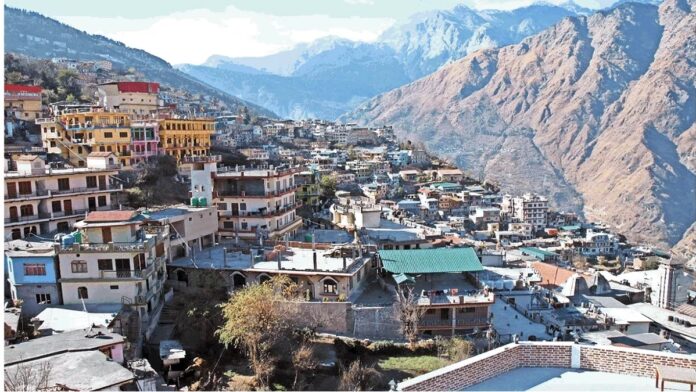Joshimath (News Trust of India) : The Central Building Research Institute (CBRI) based in Roorkee has provided a comprehensive study to the Uttarakhand government concerning the fractures discovered in the topography of Joshimath. The facts made by CBRI scientists in this research are nothing short of amazing. According to the assessment, a startling 1200 houses across 14 areas in Joshimath are classified severely insecure. In their extensive examination, CBRI scientists have unequivocally labeled this location as a high-risk zone.
Beyond the scope of CBRI Roorkee, numerous other institutes nationally are currently studying the subterranean fissures in Joshimath. Approximately 800 families in Joshimath have already been evacuated to more secure sites because to the subsurface cracks. Furthermore, the state government has awarded a compensation sum of Rs 43 crore to 190 households affected by this unpleasant condition.
Geotechnical Survey Unveils Insights
CBRI Roorkee’s scientific team has not only reported on the dangerous situation of the 1200 houses within the high-risk zone but has also offered a complete study of the rehabilitation prospects for these structures. Diverse surveys, including a geotechnical survey, have been done by government organizations in various parts in Joshimath. The first findings of the geotechnical survey suggest a lack of rock formations at significant depths in Sunil ward. Conversely, rocks have been discovered by drilling activities in Manohar Bagh and Singhadhar ward, located 48 meters below ground level. Similarly, Marwari ward has revealed a rock layer at a comparable depth. Samples from these areas are currently being collected for laboratory analysis. Fugro Company, based in the Netherlands, and the Delhi Khanna Association Company are spearheading the geotechnical survey, however the decisive report is pending submission.
Insights from CBRI Roorkee Experts
Dr. Ajay Chaurasia, a scientist at CBRI Roorkee, elucidated on the study of both houses and hills following the Joshimath landslide. Dr. Chaurasia divided Joshimath into three distinct groups, enabling CBRI Roorkee scientists to conclude that 1200 structures in Joshimath are still under imminent threat. Predominantly, residences in Manohar Bagh, Singhadhar, and Marwari Bazar have been classified as high-risk structures.
Commencing Construction in the Near Future
The administration is aggressively analyzing the report, and officials at both state and national levels are exercising caution in their pronouncements. Dr. Ranjit Sinha, the disaster secretary of Uttarakhand, stressed the constant monitoring of the entire region as per established criteria. People have been progressively transferred to secure zones since the commencement of the tragedy. Dr. Sinha noted that the Chamoli district administration has prioritized preventing loss of life and property throughout the region. The report will receive rigorous assessment, and following government decisions will be diligently implemented.
Reflecting on the Catastrophe
In the events of January 9, 2023, important happenings unfolded in Joshimath, Chamoli district, Uttarakhand. Abrupt structural degradation and subsequent ground fractures grabbed the region. Notably, two renowned hotels in Joshimath succumbed to the upheaval. Displacement prompted numerous inhabitants to flee their houses, and presently, a significant number of families find consolation in relief camps.


